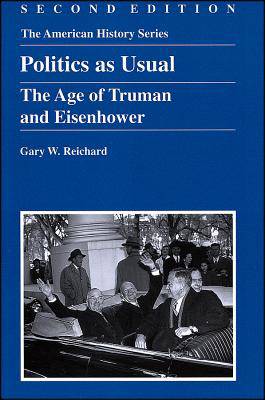
- Afhalen na 1 uur in een winkel met voorraad
- Gratis thuislevering in België vanaf € 30
- Ruim aanbod met 7 miljoen producten
- Afhalen na 1 uur in een winkel met voorraad
- Gratis thuislevering in België vanaf € 30
- Ruim aanbod met 7 miljoen producten
Omschrijving
Like its predecessor, the second edition of Politics as Usual, treats the decade and a half after World War II as a discrete historical era, the end of which represents a watershed in the political life of the nation. Despite the pressures created by the Cold War and the challenges posed by developing nations, American politics from 1945 to 1960 reflects a relatively stable equilibrium. Although from different political parties, Harry S. Truman and Dwight D. Eisenhower shared a basic caution in fiscal affairs and an acceptance of the global responsibilities thrust on the United States after the war. Meanwhile, Democrats and Republicans continued to contest elections along the familiar fault lines formed during the New Deal, and the American electorate divided its loyalties relatively evenly between the two major parties.
Since 1988, when the first edition of Politics as Usual appeared, much has happened to affect our perspective on American political life during the Truman-Eisenhower years. Of greatest importance, the end of the Cold War and the subsequent opening of significant new sources from "the other side" allow us to see through a different prism the decisions and stances taken by American presidents and policymakers. In addition to considering the impact of the new--and newly informed--historical literature, Reichard gives more attention to the challenges posed by the formation of Israel, the rise of Arab nationalism in the 1940s and 1950s, the Korean War, the early stages of United States involvement in Vietnam, and CIA operations. This second edition also features a new photographic essay.
Specificaties
Betrokkenen
- Auteur(s):
- Uitgeverij:
Inhoud
- Aantal bladzijden:
- 213
- Taal:
- Engels
- Reeks:
- Reeksnummer:
- nr. 37
Eigenschappen
- Productcode (EAN):
- 9780882952260
- Verschijningsdatum:
- 22/12/2003
- Uitvoering:
- Paperback
- Formaat:
- Trade paperback (VS)
- Afmetingen:
- 138 mm x 204 mm
- Gewicht:
- 272 g

Alleen bij Standaard Boekhandel
Beoordelingen
We publiceren alleen reviews die voldoen aan de voorwaarden voor reviews. Bekijk onze voorwaarden voor reviews.











